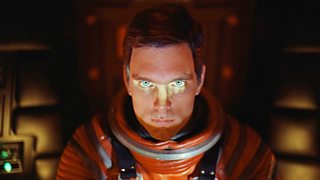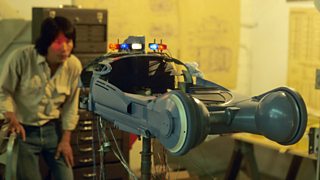Alien monsters: The terrifying visions of HR Giger
28 September 2016
It's no easy thing to give birth to a monster – ask Mary Shelley. The late artist HR Giger did just that with his landmark work on Ridley Scott's celebrated sci-fi film, Alien. Giger’s hideous ‘biomechanical’ alien was central to his nightmarish production design. His sombre, terrifying aesthetic was something that cinema audiences had never experienced before and it continues to haunt the darker side sci-fi films. Now, published in an enormous new book, Giger’s astonishing visuals, drawn from across his career, have been collected and presented in their entirety. PAUL ADAMS casts an eye over them and shudders.

Is there a more potent image in sci-fi cinema than the sight of the crashed extra-terrestrial spacecraft encountered by the luckless protagonists in Ridley Scott’s 1979 masterpiece, ?
The unearthly ship seems fused out of bone and sculpted into nightmarish forms – like the innards of a fossilised leviathan. The only thing more terrifying in the entire film is the demonic figure of the alien itself – elongated, hardened, razor sharp, lethal, hellish, and a creation unlike any other in cinema.
At its essence, Giger鈥檚 art digs down into our psyches and touches our very deepest primal instincts and fearsRidley Scott
While the directing plaudits rightly went to Scott, the true hero of the film was a then little-known Swiss artist and illustrator called HR Giger. The artist’s production design for the film was a perfect showcase for his singular and disturbing aesthetic.
Scott himself summarised, “At its essence, Giger’s art digs down into our psyches and touches our very deepest primal instincts and fears. His art stands in a category of its own. The proof of this lies in the intensity of his work and imagination, which I can only compare to and .”
‘Biomechanical’ is the term usually applied to Giger’s work. In it, skeleton and metal become enmeshed – steel structures seem to sprout organically while flesh looks to have been poured or formed while molten.
Usually monochromatic, Giger’s work often elude to a disquieting eroticism as naked humanoid figures are plugged or pierced by a bizarre array of mechanical forms that seem to have an alien biology rather than a structure.
The impact of his work is hard to overstate with countless subsequent sci-fi and horror films giving a nod to Giger in their attempts to conjure up a scare for their audiences. Simply, his dark, elemental, and disconcerting visions have become synonymous with nightmares.
Now, a new book has collated the complete, diverse works of this unusual artist. Simply called HR Giger, in 400 pages it features his numerous illustrations, his film design work, his sculptures and even his Giger-themed bars.
Begun before his death in 2014, the final book presents a full picture of one man’s uncompromising aesthetic – a magnum opus that reads like an anthology of cinema's fever dreams.
is published by TASCHEN and available from October 2016.
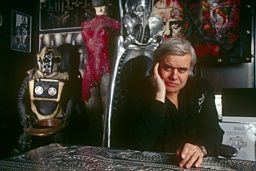
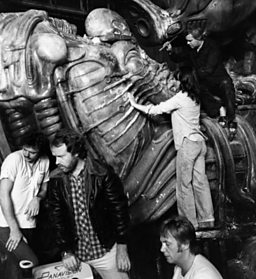
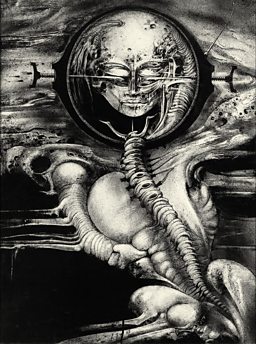
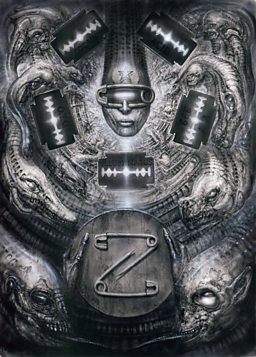
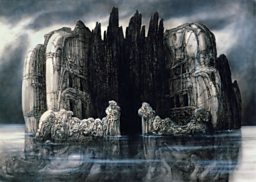
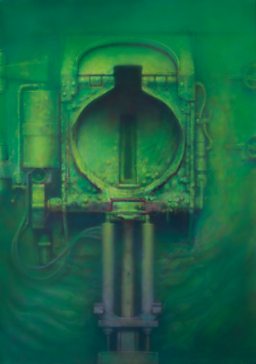
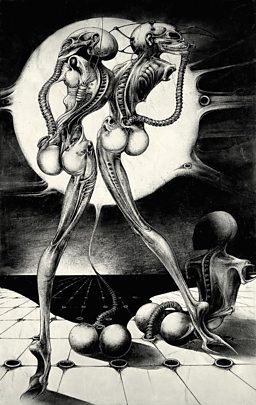

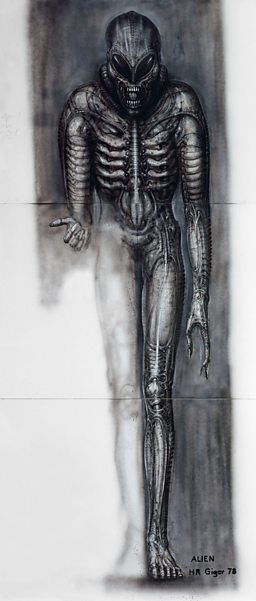
More sci-fi on 成人快手 Arts
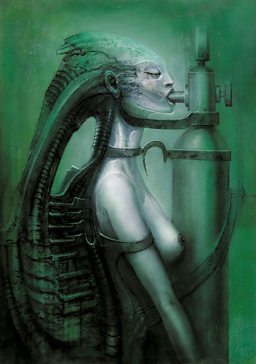
Related Links
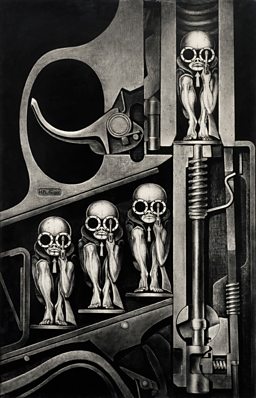
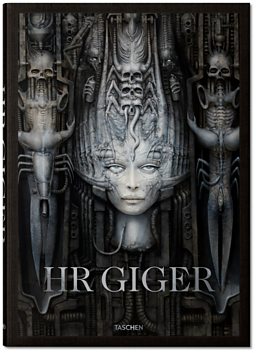
More from 成人快手 Arts
-
![]()
Picasso鈥檚 ex-factor
Who are the six women who shaped his life and work?
-
![]()
Quiz: Picasso or pixel?
Can you separate the AI fakes from genuine paintings by Pablo Picasso?
-
![]()
Frida: Fiery, fierce and passionate
The extraordinary life of Mexican artist Frida Kahlo, in her own words
-
![]()
Proms 2023: The best bits
From Yuja Wang to Northern Soul, handpicked stand-out moments from this year's Proms
